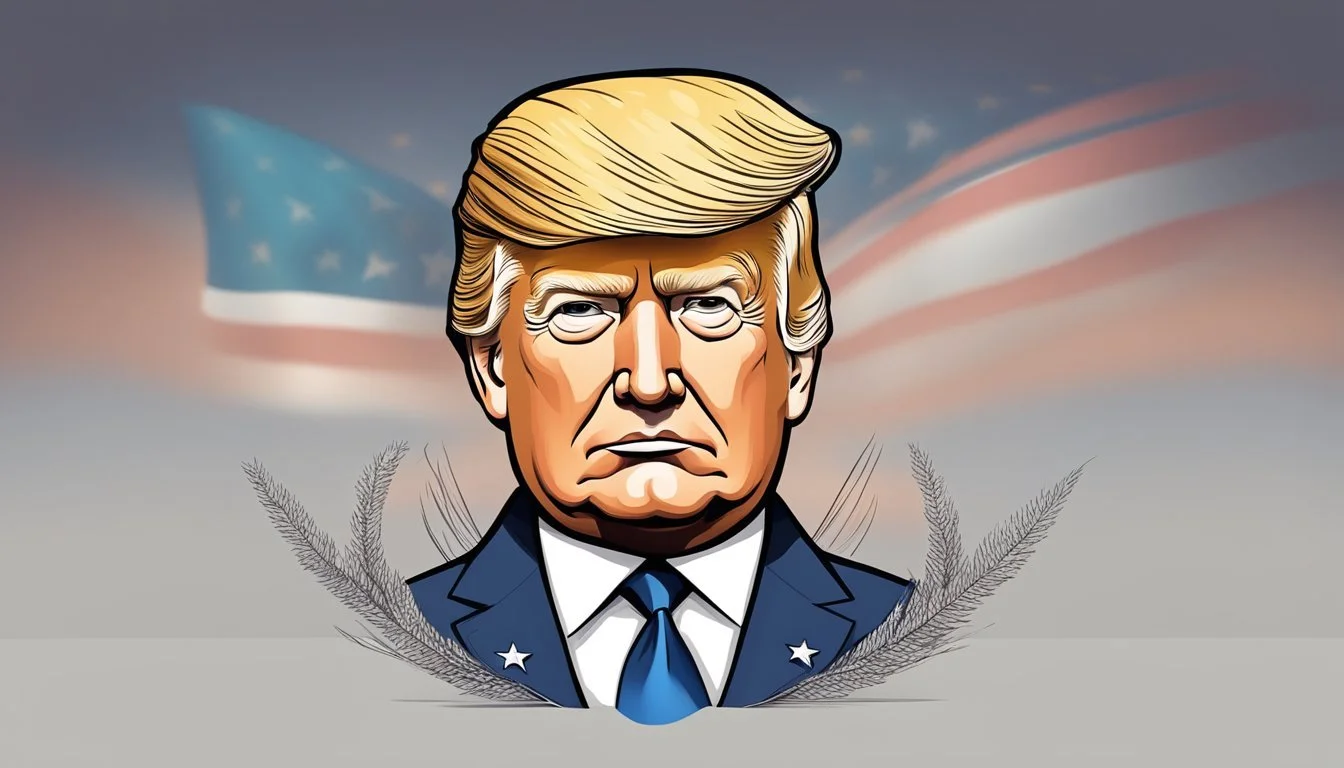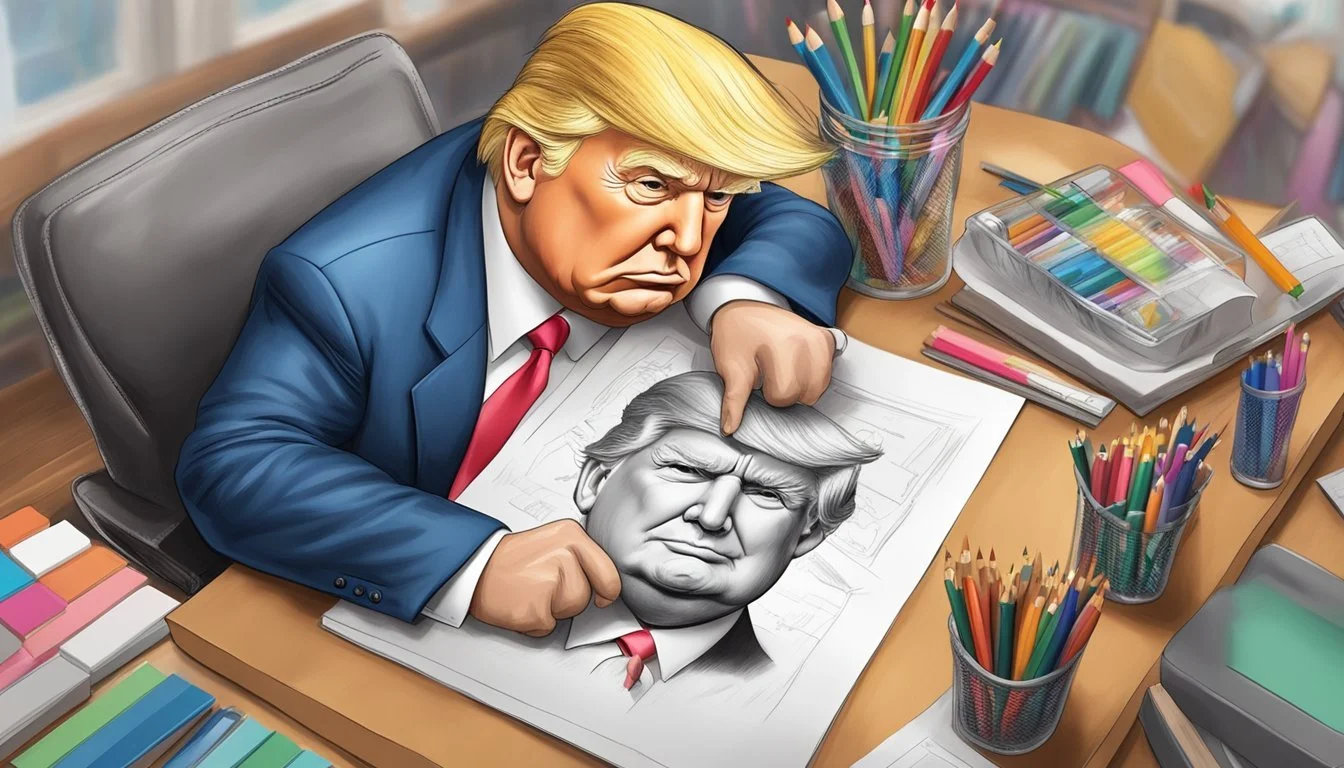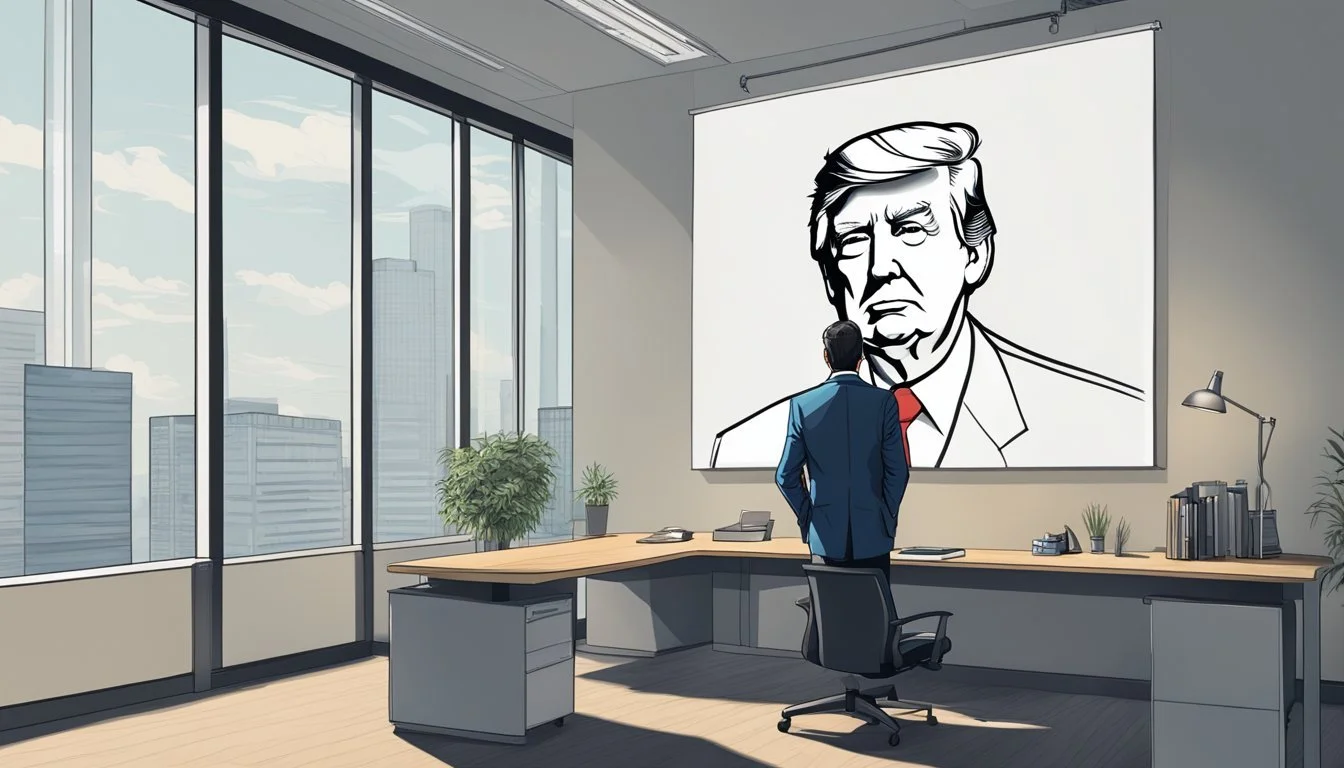Presidential Address Echoes Historical Rhetoric
Donald Trump's distinctive appearance has made him a popular subject for artists and cartoonists. His recognizable features - the shock of blonde hair, the squint, and the pursed lips - lend themselves well to caricature. Drawing Donald Trump involves capturing his essence through exaggerated facial features and expressions.
Many tutorials and guides exist online to help aspiring artists sketch the former president. These range from simple step-by-step instructions for cartoon-style drawings to more advanced techniques for realistic portraits. Some focus on Trump's face, while others depict full-body illustrations incorporating his signature suits and gestures.
Professional illustrators have created countless Trump drawings for publications, political cartoons, and artwork. Their interpretations vary widely, from flattering depictions to unflattering caricatures, reflecting the polarizing nature of Trump's public image. The abundance of Trump drawings speaks to his ongoing cultural impact and recognizability as a public figure.
The Art of Donald Trump Caricatures
Donald Trump's distinctive appearance has made him a popular subject for caricaturists. His unique hairstyle, facial expressions, and mannerisms provide rich material for satirical portrayals.
History and Evolution
Caricatures of Donald Trump gained prominence during his 2016 presidential campaign. Political cartoonists quickly latched onto his recognizable features, exaggerating his swept-back hairstyle and facial expressions.
Early depictions often focused on Trump's business background, portraying him in suits with exaggerated ties. As his political career progressed, artists incorporated more patriotic elements and presidential symbols into their caricatures.
The evolution of Trump caricatures reflects changing public perceptions and political events throughout his presidency and beyond. Artists continually adapted their portrayals to capture new controversies and policy decisions.
Caricature Techniques and Styles
Trump caricatures employ various artistic techniques to emphasize his most recognizable traits. Common elements include:
Exaggerated hair: Often depicted as an oversized, swirling mass
Pronounced facial features: Squinting eyes, pursed lips, and furrowed brow
Orange-tinted skin: A nod to his distinctive complexion
Exaggerated hand gestures: Highlighting his animated speaking style
Artists use different styles to portray Trump, ranging from realistic renderings with slight exaggerations to highly stylized, abstract interpretations. Some opt for a more cartoon-like approach, while others employ detailed cross-hatching techniques for a more serious tone.
Digital illustrations have become increasingly popular, allowing for quick creation and distribution of Trump caricatures across social media platforms.
Donald Trump and Political Satire
Donald Trump has become a central figure in political satire, inspiring countless cartoons and caricatures. His distinctive appearance and controversial actions have provided ample material for cartoonists to critique and lampoon the former president.
Trump in The New Yorker
The New Yorker magazine has featured numerous satirical depictions of Donald Trump. Renowned cartoonists like Barry Blitt have captured Trump's likeness in exaggerated and symbolic ways. Blitt's covers often portray Trump in absurd situations, highlighting perceived flaws or controversies.
These cartoons frequently emphasize Trump's physical features, such as his hair and skin tone. The New Yorker's satirical approach tends to be more subtle and intellectual compared to other publications, often using visual metaphors to convey complex political commentary.
Notable Trump Cartoonists
Several cartoonists have gained prominence for their Trump-focused work:
Ann Telnaes (Washington Post)
Mike Luckovich (Atlanta Journal-Constitution)
Steve Breen (San Diego Union-Tribune)
These artists employ various styles to critique Trump's policies and behavior. Some use minimal lines to capture his essence, while others opt for detailed caricatures. Their work often draws parallels between Trump and historical figures, particularly Richard Nixon.
Satirical Themes and Narratives
Common themes in Trump-related political cartoons include:
Ego and narcissism
Relationship with media and "fake news"
Foreign policy decisions
Twitter usage and communication style
Cartoonists frequently depict Trump's perceived disdain for traditional political norms. They use visual metaphors like a wrecking ball or tornado to represent his disruptive impact on institutions.
Many cartoons also focus on Trump's distinctive hairstyle and orange-tinted skin, exaggerating these features to create instantly recognizable caricatures. These visual cues have become shorthand for referencing Trump in political satire.
Courtroom Illustrations of Trump
Courtroom artists have captured key moments in Donald Trump's legal proceedings through their sketches. These illustrations provide visual documentation of significant cases and showcase the work of talented artists.
Significant Cases and Moments
Donald Trump's hush money trial in Manhattan has been a focal point for courtroom artists. The case, brought by District Attorney Alvin Bragg, alleges Trump falsified business records to conceal payments to Stormy Daniels. Justice Juan M. Merchan presides over the proceedings.
Artists have depicted Trump's demeanor and reactions during key moments. Sketches show him seated at the defense table, interacting with lawyers, and responding to testimony. The illustrations capture the courtroom atmosphere and body language of participants.
Leading Courtroom Artists
Jane Rosenberg is a prominent courtroom artist who has covered Trump's trials. Her sketches have gained attention for their detailed portrayal of the former president's expressions and courtroom scenes. Rosenberg's work was featured in a Library of Congress exhibition on courtroom illustration.
Elizabeth Williams and Christine Cornell are other notable artists documenting Trump's legal battles. Their illustrations provide different perspectives on the proceedings. Cornell has described focusing on Trump's distinctive features like his eyebrows and hairstyle when creating her sketches.
These artists work quickly to capture fleeting moments in the courtroom. Their illustrations serve as a vital record, bringing the closed proceedings to life for the public.
The Ins and Outs of Illustration
Illustration brings ideas to life through visual representation. It combines artistic skill with keen observation to capture essence and evoke emotion.
Illustration for Different Media
Illustrations adapt to various media formats. Print publications require high-resolution images that reproduce well on paper. Digital platforms allow for more vibrant colors and interactive elements.
Magazine covers often feature eye-catching illustrations to grab attention on newsstands. Book illustrations enhance storytelling, especially in children's literature.
Editorial cartoons in newspapers use caricature to comment on current events. These exaggerated depictions often emphasize distinctive physical features like hair or mouth shape.
Online publications may incorporate animated illustrations or infographics. These dynamic visuals can engage readers and explain complex concepts more effectively than static images.
Challenges in Depicting Public Figures
Illustrating public figures presents unique challenges. Artists must balance recognizability with artistic interpretation.
Caricatures walk a fine line between humor and offense. Exaggerating physical features can be controversial, especially when depicting politicians or celebrities.
Facial expressions and body language convey personality and mood. Skilled illustrators capture these nuances to create compelling portraits.
Avoiding bias is crucial when illustrating contentious figures. Artists must consider how their depictions might influence public perception.
Symbolism often plays a role in political illustrations. Objects or settings can represent abstract concepts like power or greed.
Digital and API Integration in Art
Digital tools and APIs are revolutionizing artistic creation and distribution. Artists now leverage technology to produce innovative works and reach global audiences instantly.
How Technology Is Shaping Art
Digital art has expanded creative possibilities. Artists use software like Adobe Creative Suite and Procreate to craft intricate illustrations and designs. 3D modeling programs enable sculptors to visualize complex forms before physical creation.
Artificial intelligence generates unique artworks, challenging traditional notions of creativity. Machine learning algorithms analyze vast image datasets to produce original pieces.
Virtual and augmented reality platforms offer immersive art experiences. Viewers can interact with digital installations in ways previously impossible.
APIs for Artists and Developers
APIs connect artists with powerful tools and services. Image recognition APIs allow automatic tagging and categorization of artworks.
Color analysis APIs help artists refine palettes and understand visual trends. Developers integrate these into art creation software for real-time feedback.
Content delivery APIs enable artists to distribute their work across multiple platforms simultaneously. This increases exposure and simplifies portfolio management.
Blockchain APIs facilitate secure tracking of digital art ownership and provenance. This technology supports the growing market for digital collectibles and NFTs.
Impact of Art on Business and Projects
Art plays a significant role in shaping business environments and influencing project outcomes. It can enhance corporate image, boost creativity, and add value to small-scale endeavors.
Corporate Use of Art
Many corporations leverage art to create distinct brand identities and stimulate workplace productivity. Donald Trump's businesses have often incorporated art as a key element in their properties. Luxury hotels and resorts owned by Trump feature carefully curated artwork to enhance guest experiences and project an image of sophistication.
Corporate art collections serve multiple purposes:
Improving workplace aesthetics
Inspiring employees
Impressing clients and stakeholders
Some companies commission custom pieces that reflect their values or history. Others rotate displays of local artists' work, supporting community engagement while keeping office spaces fresh and dynamic.
Art in Small Projects
Small projects benefit from artistic elements in numerous ways. Incorporating art can elevate the perceived value of products or services. Graphic design plays a crucial role in marketing materials, websites, and packaging for small businesses.
Art in small projects:
Attracts attention
Communicates brand personality
Differentiates from competitors
Entrepreneurs often use visual storytelling to connect with customers. Hand-drawn illustrations or custom photography can make a lasting impression, even with limited budgets. DIY art projects for business spaces can foster creativity and team bonding while personalizing the work environment.
Archiving Art: Donald Trump in Records
Donald Trump's visual representations have been preserved in various collections and exhibits. These archives capture significant moments in his political career and legal proceedings through artistic renderings.
Library of Congress Collections
The Library of Congress houses a diverse collection of Donald Trump-related artwork and imagery. Political cartoons featuring Trump are cataloged, documenting satirical portrayals throughout his presidency. Campaign posters and promotional materials from his 2016 and 2020 runs are also preserved.
Photographs of Trump at official events and rallies form a substantial part of the archive. These images provide a visual timeline of his time in office and public appearances. The collection includes digital media, such as memes and social media graphics, reflecting Trump's impact on internet culture.
Drawing Justice Exhibit
The Drawing Justice exhibit showcases courtroom sketches from high-profile trials, including those involving Donald Trump. These sketches offer rare glimpses into legal proceedings where cameras are often prohibited.
Artists like Jane Rosenberg and Bill Hennessy have captured Trump's appearances in various courtrooms. Their work depicts Trump's demeanor, expressions, and interactions during arraignments and hearings. The exhibit also features sketches from other notable cases, such as those of Harvey Weinstein and Ghislaine Maxwell.
These courtroom drawings serve as historical records, preserving visual accounts of significant legal events. They offer unique artistic interpretations of moments that shape public perception and legal history.





